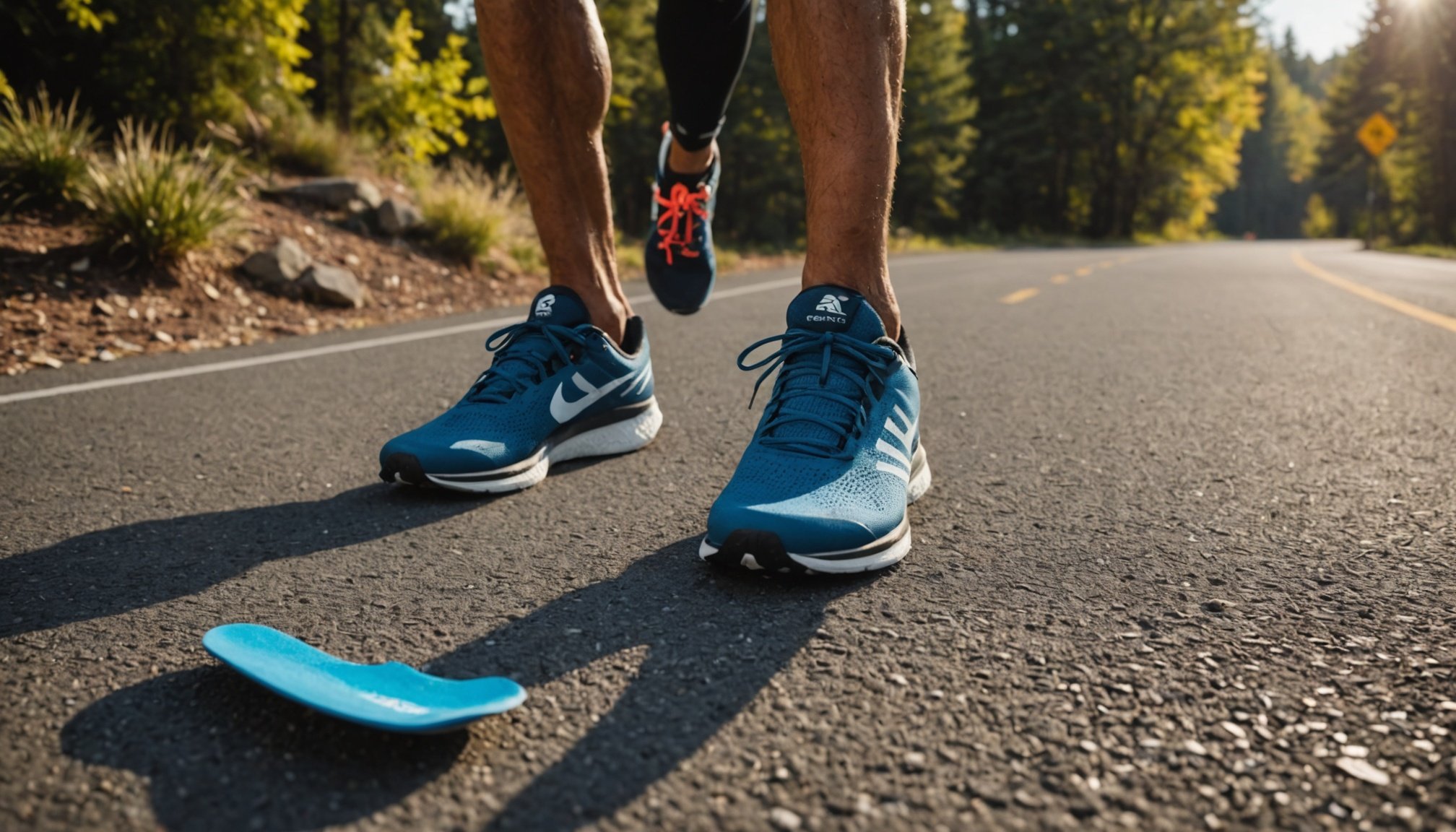Understanding Insole Sensor Technology
Insole sensor technology has revolutionised wearable tech, offering vital insights into running dynamics. These smart insoles include sensors that detect and monitor foot movements, capturing data like pressure distribution and foot strike patterns. In essence, they turn every step into valuable data, enhancing understanding of your unique running style.
The evolution of insole sensors marks a milestone in the health and fitness sector, particularly within the running community. Early versions provided basic feedback, but today’s models offer sophisticated data, fostering better biomechanics awareness and performance tuning. The integration of features such as Bluetooth connectivity in these advanced models permits data to be streamed directly to your mobile device. This real-time feedback allows runners to observe their form instantly, providing opportunities for immediate adjustments.
Also to read : Revitalize Sports Performance with Cutting-Edge Dynamic Visual Acuity Training: A Game-Changing Approach
The type of data collected by insole sensors is diverse—ranging from pressure maps that depict how force is distributed across your foot, to detailed foot strike pattern analyses. Such insights are invaluable, enabling athletes to refine their stride, improve efficiency, and reduce the risk of injury. A more informed approach to running form leads to tangible benefits in technique and results. These smart insoles are becoming an essential part of any serious runner’s gear.
Benefits of Insole Sensors for Running Technique
Smart insoles offer runners real-time feedback, acting as personal coaches on the go. By providing immediate access to data such as foot strike patterns and pressure distribution, they empower athletes to fine-tune their technique. The instantaneous insights gathered allow for prompt corrections, improving overall form.
In the same genre : Unlocking Potential: How Adaptive Training Programs Propel Aging Swimmers in Competitive Arenas
The analysis of this data doesn’t just contribute to immediate adjustments; it plays a pivotal role in long-term performance enhancement. Consistent use of insole sensor technology fosters a deeper understanding of one’s biomechanics, ultimately leading to more efficient running strategies. Recognising pressure points and adjusting accordingly can significantly reduce physical stress and improve endurance.
Moreover, by consistently evaluating and adapting their running form, athletes minimize the risk of injuries. Recognizing fault patterns and rectifying them ensures a more sustainable running practice. In the long-term, these iterative improvements culminate in notable performance gains.
These benefits of smart insoles stand as testament to the transformative impact they have on running techniques. As runners become more in tune with their bodies and how they move, their ability to push limits without compromising health improves, setting new personal bests.
Integrating Insole Sensors into Your Training
Understanding how to integrate insole sensor technology into your training can be transformative for any athlete looking to optimise their running form. The first step is familiarising yourself with the data provided by these smart insoles. By using sensors consistently, athletes gain a comprehensive view of their running patterns, enabling them to make informed adjustments to their techniques.
When incorporating these sensors into your routines, consider setting specific goals based on the insights provided. For instance, if your pressure distribution analysis shows an uneven load, you might focus on adjustments to achieve balance. Effective sensor integration is not just about data collection but leveraging that information for targeted improvement.
To maximise the benefits during runs, it’s crucial to follow recommended practices such as consistent data review and adjustments. Paying attention to the collected data, like foot strike patterns, and making necessary corrections can significantly enhance running form and performance.
Remember, improvement is incremental. The continuous loop of collecting data, implementing changes, and observing results leads to a more efficient and injury-resistant running practice. Embrace the technology as a valuable tool in refining training techniques and improving running form.
Expert Recommendations and Insights
Incorporating insole sensor technology into coaching practices offers unique advantages, as highlighted by seasoned running coaches. They emphasise that smart insoles provide exceptional granular data, enabling more precise adjustments for optimal performance. Expert advice underscores the potential of these tools in fostering personalised training regimens that address specific biomechanical inefficiencies.
Athlete feedback echoes this sentiment, with numerous testimonials attesting to the transformative impact of integrating wearable tech into everyday routines. Runners report enhanced engagement with their progress, profoundly understanding their limits and capabilities. Such insights lead to meaningful strides in training, correlating directly with improved race results and reduced injury rates.
When assessing insole sensor technology, experts compare various brands, focusing on aspects like data accuracy, ease of use, and additional features such as Bluetooth integration. Some brands stand out for their precision and user-friendly design, winning favour among both recreational joggers and elite athletes.
This collective wisdom shapes a comprehensive blueprint for leveraging insole sensors as a cornerstone of modern athletic training, providing both beginners and seasoned runners with tailored guidance on optimising their running experience.
Injury Prevention Solutions with Insole Sensors
Insoles equipped with advanced sensor technology present a viable solution for injury prevention in runners. By providing accurate, real-time data on foot strike analysis and pressure distribution, these wearable tech tools allow athletes to identify and correct potentially harmful running patterns before they lead to injuries. Understanding these patterns is crucial for addressing common issues such as overpronation and excessive impact force, which can cause stress fractures or plantar fasciitis.
Specific injuries often faced by runners, such as shin splints or Achilles tendonitis, can be mitigated through insights provided by smart insoles. The nuanced data they provide sheds light on uneven pressure points or improper gait, prompting proactive adjustments. For instance, recognising a tendency to strike heavily on the heel can guide a runner to transition towards a more midfoot or forefoot strike, distributing impact forces more evenly.
To maximise the benefits of insole sensor technology for injury prevention, runners are advised to regularly review their data and integrate preventive practices such as targeted exercises and stretches. By continuously adapting their running habits based on these insights, athletes can maintain optimal running health and prolong their athletic careers.
Success Stories and Case Studies
Running success stories with smart insoles showcase their remarkable impact on athlete performance and injury prevention. One compelling example includes a seasoned marathon runner who, through detailed foot strike analysis, transitioned from heel striking to a more efficient forefoot strike. This change not only reduced stress on their knees but also improved overall speed and endurance.
Injury prevention is another crucial area where insole technology shines. A case study featured a runner with a history of stress fractures. By utilising pressure distribution data, they identified high-impact zones contributing to recurring injuries. With these insights, the runner adjusted landing techniques, reducing the risk of future injuries.
These performance improvement cases illustrate the before-and-after results of implementing insole sensor feedback. Runners often report enhanced awareness of their biomechanics and a more refined stride. One particular athlete noted a noticeable drop in race times after consistently incorporating sensor-driven adjustments into their training regimen.
These real-life examples and case studies underline the transformative potential of insole sensors in the running community. By effectively addressing injury risks and honing technical skills through precise data, athletes witness significant advancements in their running careers.



